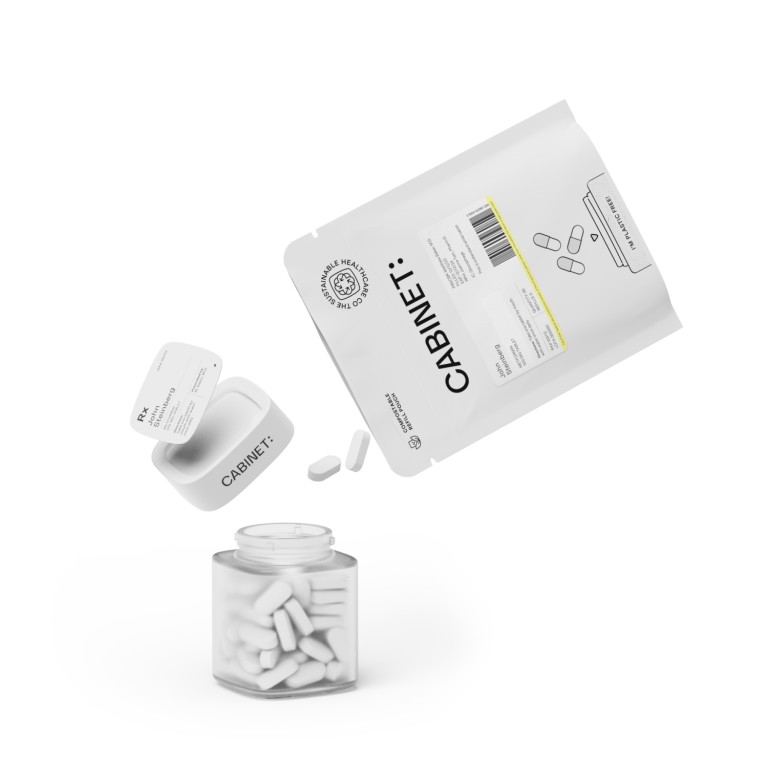Famotidine is a commonly prescribed medication that is used to treat various conditions such as ulcers, heartburn, and acid reflux. While it can provide relief to many individuals, it is important to be aware of the potential side effects associated with this medication. In this article, we will dive into the world of famotidine and unveil the risks that come along with it.
Understanding Famotidine: What is it and How Does it Work?
Before we delve into the potential side effects of famotidine, let's first understand what this medication is and how it works. Famotidine belongs to a class of drugs known as H2 blockers. It works by reducing the amount of acid produced in the stomach, thus providing relief from the symptoms of conditions such as heartburn and acid reflux.
The Role of Famotidine in the Body
When you consume food, your stomach starts producing acid to aid in the digestion process. However, sometimes this acid production can go into overdrive, causing discomfort and pain. This is where famotidine comes to the rescue. By blocking the histamine receptors in the stomach, famotidine inhibits the release of acid, helping to alleviate symptoms and restore balance.
But how exactly does famotidine achieve this? Let's take a closer look at the mechanism of action. Famotidine works by binding to the H2 receptors on the surface of the stomach cells. This binding prevents histamine, a chemical messenger that triggers acid production, from attaching to these receptors. As a result, the production of stomach acid is reduced, providing relief from the symptoms of heartburn and acid reflux.
It is important to note that famotidine does not completely stop the production of stomach acid. Instead, it helps to regulate and normalize acid levels, ensuring that they remain within a healthy range. This is crucial for maintaining proper digestion and preventing the discomfort associated with excessive acid production.
Common Uses of Famotidine
Famotidine is primarily used to treat conditions such as peptic ulcers, gastroesophageal reflux disease (GERD), and Zollinger-Ellison syndrome, a rare condition that causes excess stomach acid production. Peptic ulcers are open sores that develop on the lining of the stomach or the upper part of the small intestine. They can be caused by factors such as infection with Helicobacter pylori bacteria, long-term use of nonsteroidal anti-inflammatory drugs (NSAIDs), or excessive alcohol consumption.
GERD, on the other hand, is a chronic condition characterized by the backflow of stomach acid into the esophagus. This can lead to symptoms such as heartburn, regurgitation, and difficulty swallowing. Famotidine helps to reduce the production of stomach acid, thereby alleviating these symptoms and promoting healing of the esophageal lining.
Zollinger-Ellison syndrome is a rare disorder in which tumors called gastrinomas form in the pancreas or duodenum. These tumors produce excessive amounts of gastrin, a hormone that stimulates the release of stomach acid. Famotidine is used in the treatment of Zollinger-Ellison syndrome to block the action of gastrin and reduce acid production.
It is worth noting that famotidine is available both over-the-counter and in stronger prescription doses, depending on the severity of the condition being treated. Over-the-counter famotidine is typically used for short-term relief of heartburn symptoms, while prescription-strength famotidine is used for more serious conditions that require long-term management.
The Dark Side of Famotidine: An Overview of Side Effects
While famotidine can provide relief for those suffering from gastrointestinal issues, it is not without its potential drawbacks. Like any medication, it can come with certain side effects, ranging from mild to severe.
It is important to be aware of the possible side effects of famotidine, as they can vary in severity and impact individuals differently. By understanding these potential risks, you can make informed decisions about your health and seek appropriate medical attention if necessary.
Mild Side Effects: What to Expect
Some individuals may experience mild side effects when taking famotidine. These can include headache, dizziness, constipation, and diarrhea. While these side effects may be bothersome, they are generally temporary and should subside as your body adjusts to the medication.
Headaches are a common side effect of famotidine and can range from mild to moderate in intensity. They may be accompanied by feelings of pressure or tension in the head. If you experience persistent or severe headaches while taking famotidine, it is advisable to consult your healthcare provider for further evaluation.
Dizziness is another potential side effect that some individuals may experience. This can manifest as a feeling of lightheadedness or unsteadiness. It is important to exercise caution when performing activities that require alertness, such as driving or operating heavy machinery, if you are experiencing dizziness as a side effect of famotidine.
Constipation and diarrhea are gastrointestinal side effects that can occur with famotidine use. Constipation is characterized by difficulty in passing stools or infrequent bowel movements, while diarrhea is characterized by loose or watery stools. These side effects may disrupt your normal bowel habits, but they are usually temporary and resolve on their own.
If you experience any of these mild side effects and they persist or worsen over time, it is always best to consult your healthcare provider. They can provide guidance and recommend appropriate measures to alleviate these symptoms.
Severe Side Effects: When to Seek Medical Attention
While rare, there are potential severe side effects associated with famotidine that require immediate medical attention. It is crucial to be aware of these symptoms and seek emergency medical assistance without delay if you experience any of them.
Allergic reactions to famotidine can occur, although they are uncommon. Signs of an allergic reaction may include hives, itching, rash, swelling of the face, lips, tongue, or throat, and difficulty breathing. If you develop any of these symptoms, it is important to seek immediate medical attention, as allergic reactions can be life-threatening.
In some cases, famotidine may cause chest pain or discomfort. This can be a serious side effect and should not be ignored. If you experience chest pain while taking famotidine, it is essential to seek medical evaluation promptly to rule out any underlying cardiac issues.
Irregular heartbeat, also known as arrhythmia, is another severe side effect that may occur with famotidine use. This can manifest as a rapid, slow, or irregular heartbeat. If you notice any unusual changes in your heart rhythm while taking famotidine, it is important to seek medical attention for further evaluation.
Swelling of the face, lips, tongue, or throat is a potentially serious side effect that may indicate an allergic reaction or angioedema. Angioedema is a condition characterized by rapid swelling beneath the skin, often in the face or throat area. If you experience any swelling in these areas while taking famotidine, it is crucial to seek immediate medical assistance.
It is important to remember that severe side effects with famotidine are rare, but it is always better to err on the side of caution and seek medical attention if you have any concerns. Your healthcare provider is the best resource to assess your symptoms and provide appropriate guidance.
The Science Behind Famotidine Side Effects
It is important to understand how famotidine interacts with the body to comprehend why some individuals may experience side effects while others do not.
How Famotidine Interacts with the Body
Famotidine works by blocking histamine receptors in the stomach, which reduces the production of stomach acid. While this mechanism of action provides relief for many, it can also disrupt the normal functioning of the digestive system, leading to side effects.
Why Some People Experience Side Effects
Every individual reacts differently to medications, and famotidine is no exception. Factors such as age, overall health, and other medications being taken can influence how our bodies respond to famotidine. Certain pre-existing conditions may also increase the likelihood of experiencing side effects.
Risk Factors for Experiencing Side Effects
While famotidine is generally considered safe, certain risk factors may increase the likelihood of experiencing side effects.
Age and Famotidine Side Effects
Elderly individuals may be more susceptible to side effects due to changes in their metabolism and decreased organ function. It is important for healthcare providers to closely monitor the use of famotidine in older adults to ensure its safety and effectiveness.
Pre-existing Conditions and Famotidine Side Effects
Individuals with pre-existing conditions such as liver or kidney disease may have a higher risk of experiencing side effects when taking famotidine. It is crucial for healthcare providers to consider these conditions before prescribing famotidine and adjust the dosage if necessary.
How to Mitigate the Risks of Famotidine
If you are considering taking famotidine or currently using it, there are steps you can take to mitigate the potential risks and side effects.
Dosage and Side Effects: Finding the Right Balance
The dosage of famotidine prescribed by your healthcare provider is determined based on your specific condition, overall health, and other medications you may be taking. It is important to follow the prescribed dosage and report any side effects to your healthcare provider. They may need to adjust the dosage or explore alternative treatment options.
Lifestyle Changes to Reduce Side Effects
In addition to medication, certain lifestyle changes can help reduce the risk and severity of famotidine side effects. This includes maintaining a healthy diet, avoiding trigger foods that may exacerbate symptoms, and implementing stress management techniques such as meditation or exercise.
In conclusion, famotidine is a medication commonly used to treat conditions such as ulcers, heartburn, and acid reflux. While it can provide relief to many individuals, it is important to understand the potential side effects associated with its use. By being aware of these risks, adjusting dosage when necessary, and making lifestyle changes, you can mitigate the potential drawbacks of famotidine and ensure a safer and more effective treatment experience.








